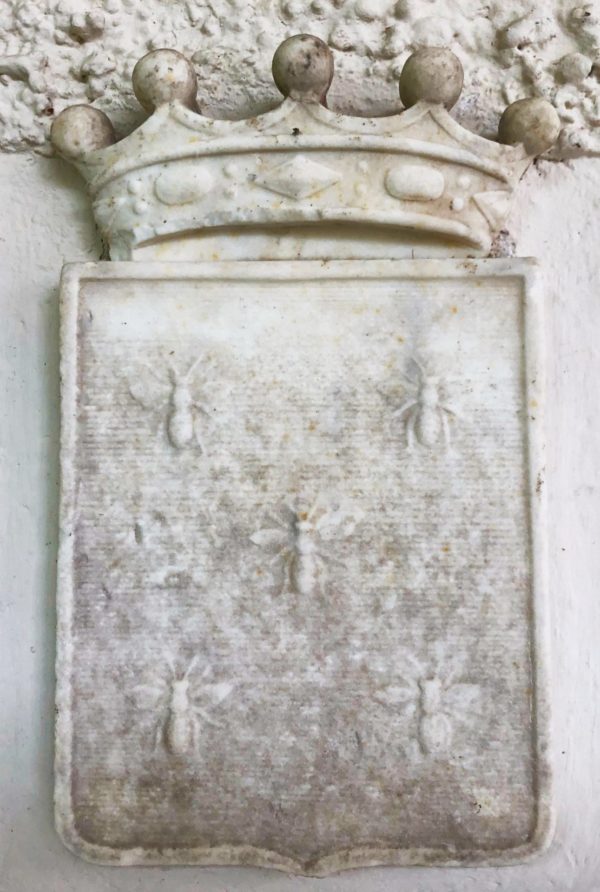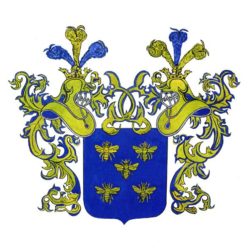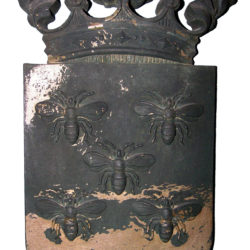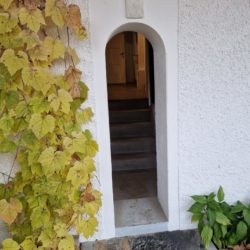
Coat of arms of the Luschan family in Ljubljana
LJUBLJANA, PLEčNIK'S HOUSE, KARUNOVA ULICA 4-6
Location of the coat of arms: other
The noble Luschan (Slov.: Lušan) family was founded by Lucas Luschan, born in 1786 in the village of Šutna (no. 17; Germ. Schutt) between Kranj (Germ. Krain) and Škofja Loka (Germ. Bischofslack), to Bartholomäus and Apolonia, née Alitsch. The original form of the family name stated in the civil registers during the eighteenth century was Los(c)han. A recipient of the Knaffel Foundation Scholarship, Lucas studied in Vienna; in 1814, he obtained his doctorate in law and entered state service, starting as an official at the tax office in Vienna and then in Ljubljana’s land tax administration. In 1818, he was transferred to Karlovac and after that served at the Bohemian appellative court for a while. In 1824, he returned to Ljubljana to take up the position of councilor at the town and provincial court, after which, bearing the same title, he entered service in Klagenfurt in 1830. In 1854, he assumed his last office—that is, as councilor at the higher provincial court in Graz. Being in a frail state of health, he retired in 1855. Shortly before his death in 1867, he paid homage to his native area by commissioning a Carinthian artist to produce an altar painting for the pilgrimage church in Crngrob (Germ. Ehrengruben am Moosbach).
In 1855, the emperor rewarded Lucas Luschan for his forty-year loyal and successful state service by conferring on him the third-class Imperial Order of the Iron Crown and promoting him to the Austrian rank of hereditary nobility. For his coat of arms, Lucas selected golden bees against the blue background, probably symbolizing diligence and commitment.
Undoubtedly the most famous descendant of Lucas Luschan was his grandson Felix (1854–1924), a holder of several doctorates, professor of anthropology at Humboldt University in Berlin, director of the Ethnographic Museum in Berlin, and privy councilor. Von Luschan’s chromatic scale as a method of classifying skin color is named after him.
As for other descendants of Lucas Ritter von Luschan, only two of his sons remained in Ljubljana—Gustav as the president of the mining office in Ljubljana and Albert as senior financial councilor. Because of its German affiliations, this part of the family was frequently targeted by the Slovenian press, especially the Slovenski Narod daily. Some of its members left Slovenia after the First World War and others, opting for Germany, left during the Second World War. Whereas there are no descendants of Lucas Ritter von Luschan in Slovenia today, they can still be found in Austria and Sweden.
The knightly Luschan family had a beautiful tombstone erected next to the wall in Ljubljana’s Žale Cemetery. It was made of reddish marble and featured a metal coat of arms. The tombstone is no longer there, and the coat of arms is now in private ownership. Much more famous than the said coat of arms is currently its stone variant on display in Plečnik House in Ljubljana. In the 1930s, the architect Jože Plečnik had the heraldic plaque built into his conservatory. What remains unknown is where the plaque was originally from.
Sources:
Rugále, Mariano & Preinfalk, Miha: Blagoslovljeni in prekleti. 2. del: Po sledeh mlajših plemiških rodbine na Slovenskem. Ljubljana: Viharnik, 2012, pp. 117–126.



